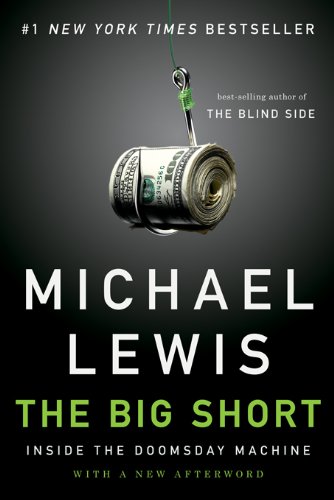

This article is an excerpt from the Shortform summary of "The Big Short" by Michael Lewis. Shortform has the world's best summaries of books you should be reading.
Like this article? Sign up for a free trial here .
What does it mean to “short” the housing market? How did investors who shorted the housing market in the early 2000s benefit from the events leading up to the 2008 financial crisis?
Shorting the housing market is a way of placing a bet against the market. If homes fall in value and the housing market declines, people who have shorted the housing market benefit.
Learn how shorting the housing market works and how investors who did it predicted (and benefited from) the 2008 financial crisis.
Definition: Shorting the Market
Before we discuss what it means to short the housing market, let’s look at what it means to “short” something more generally.
“Shorting” an asset is a way of placing a bet against it. If you believe, for example, that General Electric is about to sustain major losses, you can acquire borrowed shares of GE stock through your brokerage, with the promise to return those shares at a later, agreed-upon date. If the stock declines in value between when you borrow it and when you must return it, you earn a net profit on the transaction. If you borrow 10 shares of GE when it’s selling for $100 per share and then immediately sell those shares, you pocket $1,000. If they’re selling for $50 each when you need to purchase them in order to return them, your net profit is $500—$1,000 minus the $500 you now need to spend to purchase the stock.
But if the stock has risen in value between when you borrowed the shares and when you must return them, you suffer a net loss on the transaction. If GE is trading at $150 per share when you have to return the stock, your net loss is $500—$1,000 minus the $1,500 you now need to spend to purchase the stock at its higher price.
Shorting the Housing Market in the Early 2000s
Dr. Michael Burry, an authority on value investing, saw a rare opportunity in the subprime housing bond market, where no one else was looking. He was going to target the subprime market because of his conviction that it was extraordinarily overvalued. He was going to short the housing market.
Burry had, with characteristic fastidiousness, studied the underlying loans which made up the pool of mortgages being stuffed into the bonds. He saw that borrowers with no income and no documentation were taking up a larger and larger share of the mortgages. Lending standards had collapsed in the face of the market’s insatiable demand for subprime, as loan originators devised more and more elaborate means to justify loaning money to clearly un-creditworthy borrowers. These loans were then being repackaged into bonds and sold off by the big banks.
But how would Burry short these types of bonds? Their structure made them impossible to borrow, as the tranches (slices) were too small to individually identify. The market didn’t have a mechanism for an investor like Burry, who believed that the subprime mortgage bond market was essentially worthless. No one thought the housing market could fail, so most people would think the idea of shorting it ludicrous.
But Burry knew a workaround to this problem. He was about to dive into the world of credit default swaps. These insurance policies on bonds would allow him to bet against the housing market–and win.
A few other maverick investors would short the housing market, and when the housing market started to collapse in 2007 and 2008, the payoff would be huge.
Credit Default Swaps
A credit default swap is an insurance policy on a bond. Like most insurance policies, the seller receives regular premium payments for a fixed term, roughly the same as an auto or home insurance policy might work.
For example, if you purchased credit default swaps on $100 million of GE bonds, you might pay $200,000 per year for 10 years. Thus, your losses would be capped at $2 million. But if GE defaulted on those bonds, your payout could be up to $100 million: 50 times what you initially put down. It was a classic asymmetric bet: fixed losses, but potential winnings many multiples over that amount.
Burry saw that now was the time to act. Once the teaser rates on the subprime loans went away and borrowers started getting hit with higher interest rates (in roughly two years), there would be a wave of defaults that would bring the mortgage bond market to its knees. Once that started happening, lots of investors would be desperate to purchase insurance on the bonds they’d invested in—and the only way they would be able to do this would be through the credit default swaps that Burry would own.
But he couldn’t wait too long to buy the swaps. Once the mortgage market started to crumble, the cost of purchasing insurance on subprime mortgage-backed securities would skyrocket, making his trade unfeasible. Timing was key—he needed to corner the market on credit default swaps before the rest of Wall Street caught on, while the swaps could still be had on the cheap.
———End of Preview———

Like what you just read? Read the rest of the world's best summary of "The Big Short" at Shortform . Learn the book's critical concepts in 20 minutes or less .
Here's what you'll find in our full The Big Short summary :
- How the world's biggest banks contributed to the 2008 financial crisis, greedily and stupidly
- How a group of contrarian traders foresaw the bubble popping, and made millions from their bets
- What we learned from the 2008 crisis - if anything





